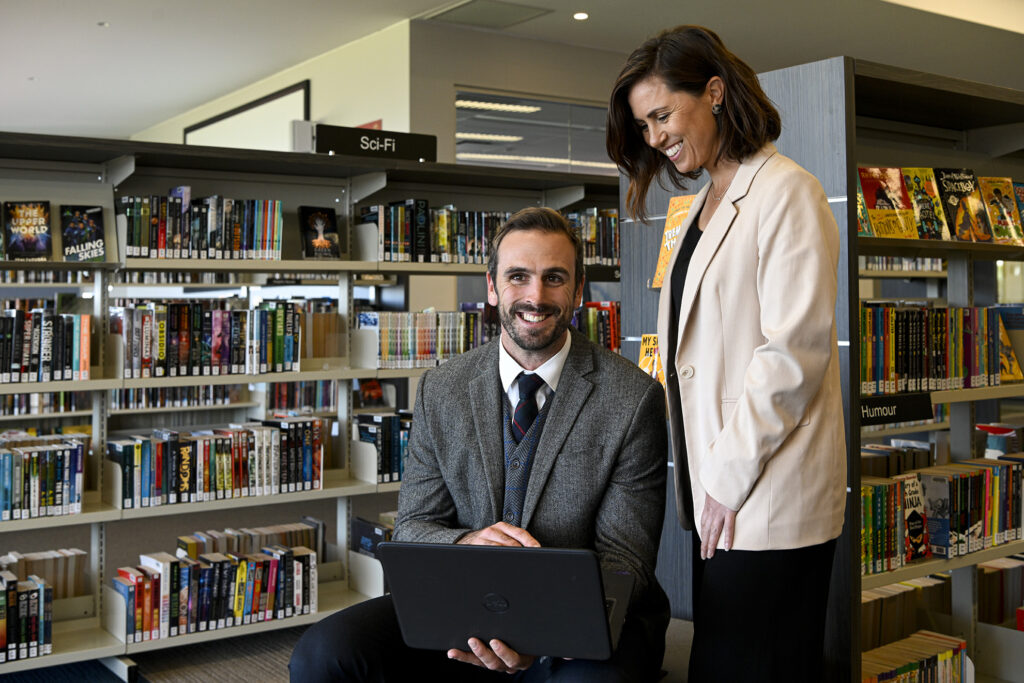
Professional Learning at St Edward’s College promotes ongoing growth and excellence in teaching and learning.
We provide opportunities for pedagogical development, enhancement and mastery, in alignment with The Australian Professional Standards for Teachers and NESA’s Teacher Accreditation process. Our aspiration in providing a liberating education and fostering right relationships is reflected in our commitment to develop skills and capabilities in providing a holistic learning environment for our community. The College recognises the importance of providing professional learning opportunities in the domains of spirituality, wellbeing, academic excellence, diverse learning and child safeguarding.
Australian Institute for Teaching and School Leadership (AITSL) National Teaching Standards
Physical, social and intellectual development and characteristics of students
Use teaching strategies based on knowledge of students’ physical, social and intellectual development and characteristics to improve student learning.
1.2
Understand how students learn Structure teaching programs using research
and collegial advice about how students learn.
1.3
Students with diverse linguistic, cultural, religious and socioeconomic backgrounds
Design and implement teaching strategies that are responsive to the learning strengths and needs of students from diverse linguistic, cultural, religious and socioeconomic backgrounds.
1.4
Strategies for teaching Aboriginal and Torres Strait Islander students Design and implement effective teaching strategies that are responsive to the local community and cultural setting, linguistic background and histories of Aboriginal and Torres Strait Islander students.
1.5
Differentiate teaching to meet the specific learning needs of students across the full range of abilities Develop teaching activities that incorporate differentiated strategies to meet the specific learning
needs of students across the full range of abilities.
1.6
Strategies to support full participation of students with disability Design and implement teaching activities that support the participation and learning of students with disability and address relevant policy and legislative requirements.
Content and teaching strategies of the teaching area
Apply knowledge of the content and teaching strategies of the teaching area to develop engaging teaching activities.
2.2
Content selection and Organisation Organise content into
coherent, well-sequenced learning and teaching programs.
2.3
Curriculum, assessment and reporting Design and implement learning and teaching programs using knowledge of curriculum, assessment and reporting requirements.
2.4
Understand and respect Aboriginal and Torres Strait Islander people to promote reconciliation between Indigenous and non-Indigenous Australians
Provide opportunities for students to develop understanding of and respect for Aboriginal and Torres Strait Islander histories, cultures and languages.
2.5
Literacy and numeracy Strategies
Apply knowledge and understanding of effective teaching strategies to support students’ literacy and numeracy achievement.
2.6
Information and Communication Technology (ICT)
Use effective teaching strategies to integrate ICT into learning and teaching programs to make selected content relevant and meaningful.
Establish challenging learning goals
Set explicit, challenging and achievable learning goals for all students.
3.2
Plan, structure and sequence learning programs
Plan and implement wellstructured learning and teaching programs or lesson sequences that engage students and promote learning.
3.3
Use teaching strategies Select and use relevant teaching strategies to develop knowledge, skills, problem solving and critical and creative thinking.
3.4
Select and use resources Select and/or create and use a range of resources, including ICT, to engage students in their learning.
3.5
Use effective classroom communication
Use effective verbal and non-verbal communication strategies to support student understanding, participation, engagement and achievement.
3.6
Evaluate and improve teaching programs Evaluate personal teaching and learning programs using evidence, including feedback from students and student assessment data, to inform planning.
3.7
Engage parents/carers in the educative process Plan for appropriate and contextually relevant opportunities for parents/carers to be involved in their children’s learning.
Support student participation
Establish and implement inclusive and positive interactions to engage and support all students in classroom activities.
4.2
Manage classroom activities
Establish and maintain orderly and workable routines to create an environment where student time is spent on learning tasks.
4.3
Manage challenging behaviour
Manage challenging behaviour by establishing and negotiating clear expectations with students and address discipline issues promptly, fairly and respectfully.
4.4
Maintain student safety Ensure students’ wellbeing and safety within school by implementing school and/ or system, curriculum and legislative requirements.
4.5
Use ICT safely, responsibly and ethically Incorporate strategies to promote the safe, responsible and ethical use of ICT in learning and teaching.
Assess student learning Develop, select and use informal and formal, diagnostic, formative and summative assessment strategies to assess student learning.
5.2
Provide feedback to students on their learning
Provide timely, effective and appropriate feedback to students about their achievement relative to their learning goals.
5.3
Make consistent and comparable judgements Understand and participate in assessment moderation activities to support consistent and comparable judgements of student learning.
5.4
Interpret student data Use student assessment data to analyse and evaluate student understanding of subject/content, identifying interventions and modifying teaching practice.
5.5
Report on student achievement
Report clearly, accurately and respectfully to students and parents/carers about student achievement, making use of accurate and reliable records.
Identify and plan professional learning needs
Use the Australian Professional Standards for Teachers and advice from colleagues to identify and plan professional learning needs.
6.2
Engage in professional learning and improve practice
Participate in learning to update knowledge and practice, targeted to professional needs and school and/or system priorities.
6.3
Engage with colleagues and improve practice Contribute to collegial discussions and apply constructive feedback from colleagues to improve professional knowledge and practice.
6.4
Apply professional learning and improve student learning Undertake professional learning programs designed to address identified student learning needs.
Meet professional ethics and responsibilities Meet codes of ethics and conduct established by regulatory authorities, systems and schools.
7.2
Comply with legislative, administrative and organisational requirements Understand the implications of and comply with relevant legislative, administrative, organisational and professional requirements, policies and processes.
7.3
Engage with the parents/carers Establish and maintain respectful collaborative relationships with parents/ carers regarding their children’s learning and wellbeing.
7.4
Engage with professional teaching networks and broader communities Participate in professional and community networks and forums to broaden knowledge and improve practice.
















